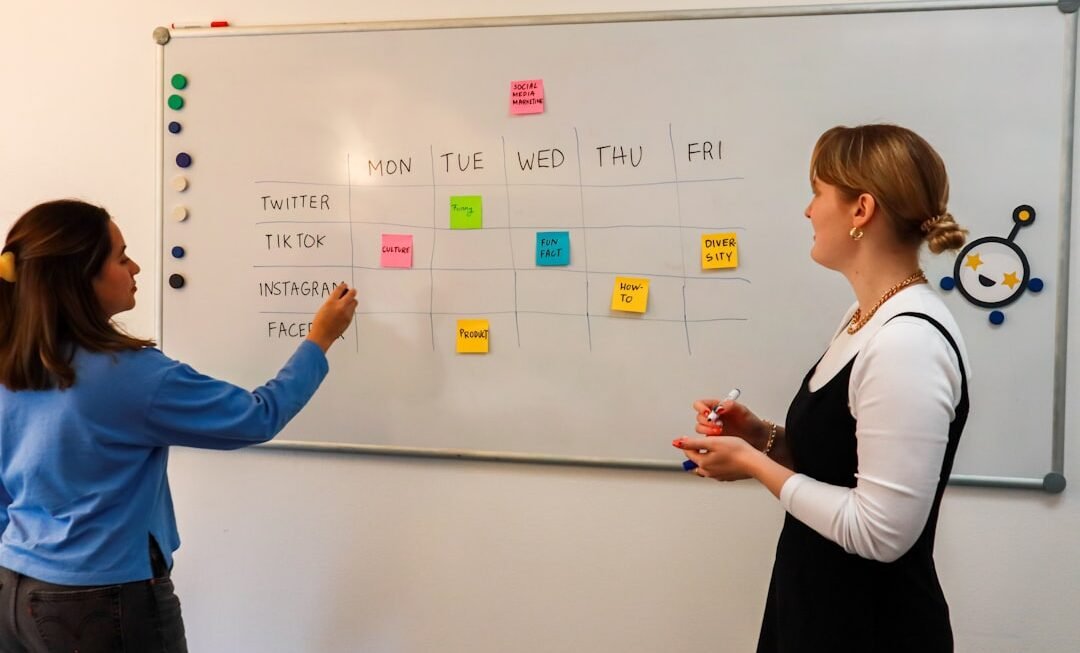The landscape of education has undergone a significant transformation in recent years, particularly with the advent of online education. This shift has been accelerated by technological advancements and the increasing demand for flexible learning options. Traditional classroom teaching, characterized by face-to-face interactions in a physical setting, has long been the cornerstone of educational systems worldwide.
However, the rise of online education has introduced new paradigms that challenge the conventional methods of teaching and learning. As students and educators navigate this evolving landscape, it becomes essential to explore the distinct characteristics, advantages, and challenges associated with both online education and traditional classroom teaching. Online education offers a unique approach to learning that leverages technology to deliver content and facilitate interactions.
It encompasses a wide range of formats, including fully online courses, hybrid models that blend online and in-person instruction, and massive open online courses (MOOCs) that provide access to educational resources on a global scale. In contrast, traditional classroom teaching relies on direct interaction between students and instructors within a structured environment. Each method has its own set of benefits and drawbacks, which can significantly impact student experiences and outcomes.
Understanding these differences is crucial for students, educators, and policymakers as they make decisions about the future of education.
Key Takeaways
- Online education offers flexibility and accessibility, allowing students to learn at their own pace and from anywhere.
- Interaction and engagement in online education can be facilitated through discussion forums, video conferencing, and interactive learning tools.
- The learning environment in online education can be tailored to individual needs, providing a personalized experience for students.
- Online education provides a wide range of resources and materials, including multimedia content and online libraries.
- Cost and affordability are key advantages of online education, as it eliminates the need for commuting and reduces other expenses associated with traditional classroom teaching.
Flexibility and Accessibility
One of the most significant advantages of online education is its inherent flexibility. Students can access course materials and lectures at their convenience, allowing them to tailor their learning experiences to fit their individual schedules. This flexibility is particularly beneficial for non-traditional students, such as working professionals or parents, who may struggle to attend classes at fixed times.
For instance, a full-time employee pursuing a degree can engage with course content during evenings or weekends, making it easier to balance work, family responsibilities, and academic pursuits. Accessibility is another critical factor that distinguishes online education from traditional classroom settings. Online courses can reach students in remote or underserved areas where educational resources may be limited.
For example, a student living in a rural community may have access to high-quality courses offered by prestigious universities that would otherwise be out of reach due to geographical constraints. Additionally, online education often accommodates diverse learning needs by providing various formats for content delivery, such as video lectures, interactive quizzes, and discussion forums. This adaptability ensures that students with different learning styles can engage with the material effectively.
Interaction and Engagement
While online education offers flexibility and accessibility, it often faces criticism regarding the level of interaction and engagement it provides compared to traditional classroom settings. In a physical classroom, students can engage in spontaneous discussions, collaborate on group projects, and receive immediate feedback from instructors. These face-to-face interactions foster a sense of community and belonging among students, which can enhance motivation and learning outcomes.
However, advancements in technology have enabled online education platforms to incorporate various interactive elements that can facilitate engagement. For instance, many online courses utilize discussion boards, live webinars, and virtual breakout rooms to encourage collaboration among students. These tools allow learners to connect with their peers and instructors in real-time, simulating some aspects of traditional classroom interactions.
Moreover, gamification elements—such as quizzes with leaderboards or interactive simulations—can enhance student engagement by making learning more enjoyable and competitive.
Learning Environment
The learning environment plays a crucial role in shaping students’ educational experiences. Traditional classrooms provide a structured setting where students are physically present with their peers and instructors. This environment can foster discipline and focus, as students are less likely to be distracted by external factors when they are in a dedicated learning space.
The physical presence of an instructor can also provide immediate support and guidance, helping students navigate complex concepts more effectively. In contrast, online education offers a more personalized learning environment that allows students to create their own study spaces. This autonomy can lead to increased comfort and motivation for some learners.
However, it also presents challenges; without the structure of a traditional classroom, some students may struggle with distractions at home or find it difficult to maintain self-discipline. The effectiveness of the learning environment ultimately depends on individual preferences and study habits. For instance, a student who thrives in collaborative settings may find traditional classrooms more conducive to their learning style, while another who prefers solitude may excel in an online format.
Resources and Materials
The availability of resources and materials is another area where online education and traditional classroom teaching diverge significantly. In traditional settings, textbooks and printed materials are often the primary sources of information. While these resources can be valuable, they may not always reflect the most current knowledge or research in a given field.
Additionally, physical textbooks can be costly and may not be easily accessible to all students. Online education, on the other hand, provides access to a wealth of digital resources that can enhance the learning experience. Students can access e-books, academic journals, multimedia content, and interactive simulations with just a few clicks.
This abundance of resources allows for a more comprehensive understanding of subjects and encourages independent research. For example, an online course on environmental science might include video documentaries, interactive maps, and access to real-time data on climate change—resources that would be challenging to incorporate into a traditional classroom setting.
Cost and Affordability
Cost is a significant consideration for many students when choosing between online education and traditional classroom teaching. Traditional institutions often come with high tuition fees, additional costs for textbooks, commuting expenses, and other associated fees. These financial burdens can deter potential students from pursuing higher education or lead them to accumulate substantial debt.
Online education frequently presents a more affordable alternative. Many online programs offer lower tuition rates compared to their traditional counterparts due to reduced overhead costs associated with maintaining physical campuses. Additionally, students can save money on transportation and housing expenses by studying from home.
For instance, an online degree program may allow students to complete their coursework without relocating or commuting long distances, making higher education more accessible for those on tight budgets.
Time Management
Effective time management is essential for academic success in both online education and traditional classroom settings; however, the approaches required differ significantly between the two formats. In traditional classrooms, students typically follow a structured schedule dictated by class times and assignments due dates set by instructors. This structure can help students develop time management skills as they learn to balance multiple responsibilities within a defined timeframe.
Conversely, online education often requires students to take greater responsibility for their time management. With the flexibility to access materials at any time, some learners may struggle to establish a consistent study routine. The absence of scheduled class times can lead to procrastination or disorganization if students do not implement effective strategies for managing their time.
For example, an online student might benefit from creating a weekly planner that outlines specific study sessions and deadlines to ensure they stay on track with their coursework.
Student Performance and Outcomes
The impact of educational format on student performance and outcomes is a topic of ongoing research and debate. Studies have shown mixed results regarding whether online education or traditional classroom teaching leads to better academic performance. Some research indicates that students in online programs may perform equally well or even better than their peers in traditional settings due to the personalized nature of online learning environments.
However, other studies suggest that certain factors—such as self-discipline, motivation levels, and prior academic preparation—play a significant role in determining student success in online courses. For instance, a highly motivated student who actively engages with course materials may excel in an online program, while another student who struggles with self-regulation might find it challenging to keep up with coursework without the structure provided by traditional classrooms.
Instructor Support and Feedback
Instructor support is vital for fostering student success in any educational format; however, the nature of this support can vary significantly between online education and traditional classrooms. In traditional settings, instructors are readily available for face-to-face interactions during class time or office hours. This accessibility allows students to ask questions directly and receive immediate feedback on their work.
In contrast, online education often relies on asynchronous communication methods such as email or discussion forums for instructor-student interactions. While these methods can facilitate thoughtful responses and allow instructors to address multiple questions at once, they may lack the immediacy of face-to-face communication. Some online programs have begun incorporating live chat features or virtual office hours to bridge this gap; however, the effectiveness of instructor support ultimately depends on the responsiveness of educators and the platforms used for communication.
Social and Emotional Development
The social and emotional development of students is an essential aspect of the educational experience that can be influenced by the chosen format of instruction. Traditional classrooms provide opportunities for social interaction among peers through group projects, extracurricular activities, and informal conversations before or after class. These interactions contribute to the development of social skills and emotional intelligence as students learn to navigate relationships with their classmates.
Online education presents unique challenges in this regard; while discussion forums and group projects can facilitate some level of interaction among students, they may not replicate the depth of connections formed in face-to-face settings. The lack of physical presence can lead to feelings of isolation for some learners who thrive on social engagement. However, many online programs are increasingly recognizing the importance of fostering community among students by incorporating collaborative projects or virtual networking events designed to enhance social connections.
Which is the Better Option?
Determining which educational format—online education or traditional classroom teaching—is superior depends largely on individual preferences, learning styles, and life circumstances. Each method has its own set of advantages and challenges that cater to different needs within the diverse landscape of learners today. Online education offers unparalleled flexibility and accessibility but may lack some aspects of interpersonal engagement found in traditional classrooms.
Conversely, traditional teaching provides structured environments conducive to social interaction but may not accommodate the diverse needs of all learners. Ultimately, the choice between these two educational formats should be guided by careful consideration of personal goals, learning preferences, financial constraints, and lifestyle factors. As technology continues to evolve and reshape educational practices, it is likely that hybrid models will emerge that combine the strengths of both approaches—offering learners the best of both worlds while addressing their unique needs in an increasingly complex educational landscape.












